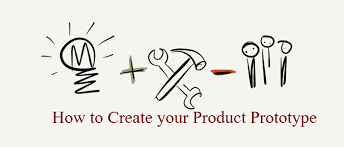Whether you are launching your first product or the hundredth one, prototyping is a must. Prototyping enables you to test your product and get feedback from early customers and stakeholders.However, it is worth mentioning that prototyping is a tedious and exhausting process as it requires you to find the right prototype companies and then improve your product as per their feedback. That said, here is how you can create a product prototype.
Hire a Professional
While this sounds like an additional investment, it is completely worth it. For instance, China prototyping manufacturing enables you to flexibly meet the diverse needs of different customers across the globe.
Professionals provide viable product designs that are tested in different environments and for different customers. They even help you collect feedback from early users and make your product the best fit for the market.
However, if you want to create a product prototype companies by yourself, here’s how you can do it.
1 – Brainstorm
The first step is to start crafting your ideas and think about how you can make them real. Ask yourself what should be the ideal design for your product and how it should work?
You should also look at the similar products available in the market. Define how your product will be different from them. You should also keep other factors in mind, such as your customers’ needs, gaps in competitors’ products, usability, cost, and your current position in the market.
- Do thorough market research
- Brainstorm with your team
- Focus on how you can solve your customers’ problem on a budget
2 – Create a Virtual Prototype
Now that you have done your research and finalized an idea, the next step is to create a virtual prototype. This will give you a better idea of how your product will look in the real world.
Software technologies like CAD (Computer-aided design) allow you to create a 3D replica of your product. We are talking about creating a 3D prototype because it will enable you to rotate and animate your design. This means you can visualize your product from all angles, just like a physical product.
Additionally, you can use software like NVIDIA Iray, CATIA Live Rendering, and Quadro to transform your 3D prototype into a more realistic design. If you don’t know how to use these tools, you can hire an expert to work for you.
Another reason to create a virtual prototype is that it is less expensive to make changes than a physical prototype. You can make as many changes as you want to make sure it is as you want it.
3 – Build a Physical Prototype
Once you have a virtual prototype ready, it’s time to build a physical one. If you have the resources (production team, machines, etc.), you can create them yourself. However, if you don’t have the resources, you can connect with a local manufacturer. You can even deal with them for future contracts. This will help lower the costs of creating a prototype.
It is also worth mentioning that there are two types of physical prototyping: 3D printing and CNC prototyping.
3D printing is ideal if you want to create disposable prototypes for your product. Examples include jewelry, consumer goods, and accessories.
CNC prototyping is all about using a machine to create a near-perfect product. It is ideal when you want to display a working demo of your product.
4- Refine Your Prototype for Perfection
Just because you have built a physical prototype, it doesn’t mean you should directly start providing it to your early customers and stakeholders. Analyze if the prototype works and looks the way you want it. Ask yourself if anything could be improved.
It’s important to remember and accept that products might require some changes to enter the market successfully. Even the best products have been launched multiple times in the past.
Wrapping Up
Product prototyping is a vital aspect of every industry. It helps understand market demand and improve your product. It is also a cost-effective way of understanding how people will react to your product. Use the four strategies mentioned above to create a prototype or hire a professional to reduce your burden.
